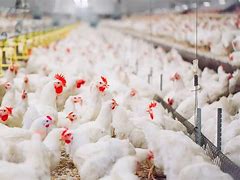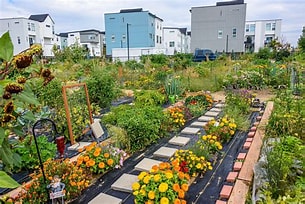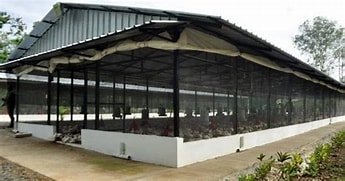The Top 5 Strategies to Maximize your Profits
Introduction: The Top 5 Strategies to Maximize your Profits
Imagine a business that offers a steady income, satisfies your desire for self-sufficiency, and contributes to global food security. Welcome to the world of poultry farming, where raising domesticated birds for meat and eggs can be a highly rewarding venture. With over 34.4 billion chickens worldwide, poultry farming is not just a niche; it’s a booming industry that demands strategic planning and execution to maximize profits.
In this article, we’ll delve into the top 5 strategies to help you succeed in poultry farming. Whether you’re a seasoned farmer or just starting out, these insights will guide you through the complexities of the industry and set you on the path to profitability

1. Crafting a Comprehensive Business Plan
A. Clarity and Focus
Before diving into the nitty-gritty of poultry farming, it’s crucial to have a well-defined business plan. This roadmap helps you navigate the industry’s complexities, avoid costly mistakes, and achieve long-term goals. Here’s how a strong plan benefits your poultry farm:
- Bird Selection: Market trends and resource analysis will help you choose the most profitable bird type. Are eggs in high demand locally? Do you have the capital for a larger broiler operation? A solid plan ensures you’re not raising birds for a saturated market.
- Housing Decisions: The plan aids in deciding on the most efficient and cost-effective housing system. Factors like cage type, ventilation, and waste management are considered upfront, saving you money on redesigning a poorly planned coop later.
- Financial Security: A sound financial plan outlines all startup and operational costs, including feed, labor, equipment, and potential veterinary needs. It also factors in projected income from selling eggs or meat, allowing you to secure funding and manage cash flow effectively.
B. Risk Mitigation
A good business plan also helps in mitigating risks. By understanding your market, you can anticipate and prepare for challenges such as fluctuating market prices and regulatory compliance. This foresight is invaluable in maintaining the health and well-being of your birds and ensuring the sustainability of your farm.
2. Utilizing Technology for Efficiency

Automation in Poultry Farming
Technology has revolutionized the poultry industry, making it more efficient and profitable. Here are some key areas where technology is making a significant impact:
- Automatic Feeders and Waterers: These systems ensure a consistent supply of food and water, reducing the risk of birds running out and eliminating the daily chore of refilling feeders and waterers.
- Data-Driven Management: The Internet of Things (IoT) allows sensors to collect real-time data on feed consumption, bird behavior, and health. Advanced data analytics provide insights into flock health, growth patterns, and potential problems, helping you optimize feeding regimens and improve bird health.
Leveraging Data Analytics
Data analytics is a game-changer in poultry farming. By monitoring and predicting bird growth, health, and behavior, you can make informed decisions that increase production efficiency and profitability. This data can be used to optimize feeding regimens, improve bird health, and ultimately boost the Feed Conversion Ratio (FCR), a measure of how efficiently feed is converted to meat or eggs.
3. Maintaining Biosecurity
Biosecurity is critical in preventing the spread of diseases and infections in your flock. Here are some measures to ensure your farm remains secure:
- Restricting Visitor Access: Limiting who can enter your farm reduces the risk of disease transmission. Ensure all visitors follow strict hygiene protocols.
- Proper Sanitation: Regular cleaning and disinfection of the farm, including coops and equipment, are essential. Proper disposal of waste also helps in maintaining a clean environment.
- Monitoring Health: Regularly monitor your flock for any signs of illness and have an action plan in place to respond promptly to health issues.
4. Optimizing Nutrition and Environmental Conditions
Proper Nutrition
Nutrition is vital for poultry growth and productivity. Here’s how to ensure your birds receive the best diet:
- Balanced Feeding Program: Choose high-quality, age-appropriate feed for your chickens. Chicks have different needs than adult hens or roosters. Layer hens, for example, require a diet rich in calcium to support egg production.
- Feed Consumption and Conversion: Monitor feed consumption and conversion rates to ensure your birds are getting the nutrients they need efficiently.
Optimal Environmental Conditions
Creating optimal environmental conditions is essential for bird health and productivity. Here’s what you need to consider:
- Ventilation and Lighting: Ensure your housing systems provide adequate ventilation, lighting, temperature, and humidity levels. Proper ventilation prevents respiratory problems, while adequate lighting can influence bird behavior and productivity.
- Litter and Manure Management: Manage litter and manure carefully to prevent the buildup of harmful gases and bacteria. This includes regular cleaning and ensuring the coop is well-drained.
5. Implementing Sustainable Practices
Sustainable practices are crucial for the long-term success of your poultry farm. Here’s how you can adopt environmentally friendly practices:
- Reducing Water and Energy Consumption: Implement measures to reduce water and energy consumption. This could include using renewable energy sources like solar or wind power.
- Ethical Animal Welfare: Adopt ethical animal welfare practices. This not only improves the health and well-being of your birds but also enhances your farm’s reputation and marketability.
- Waste Reduction: Reduce waste by implementing efficient feeding systems and managing manure effectively. This can also include using manure as fertilizer, reducing the need for synthetic fertilizers.
Marketing Your Products Effectively
Bypassing Middlemen
To maximize profits, consider bypassing middlemen by setting up your own retail outlets. This allows you to sell directly to consumers, retaining a larger share of the profit. While it requires an initial investment, it provides a firm idea of market pricing and conditions.
Going Online
In today’s digital age, having an online presence is crucial. Create a user-friendly website and utilize social media platforms to showcase your products, share updates, and engage with your audience. This helps you reach a broader market and build a loyal customer base.
Read This: A Must Read for All Poultry Farmers: A Poultry Nutrition Guide
Conclusion: Hatching Your Agricultural Dream
Poultry farming is a rewarding and lucrative venture, but it requires careful planning, execution, and adaptation to the latest technologies and practices. By crafting a comprehensive business plan, utilizing technology, maintaining biosecurity, optimizing nutrition and environmental conditions, and implementing sustainable practices, you can set your poultry farm on the path to success.
Remember, the key to profitability lies in understanding your market, managing risks, and continuously innovating. Whether you’re starting small or aiming big, these strategies will help you navigate the complexities of the poultry industry and achieve your agricultural dreams.
Meta Description:
“Discover the top 5 strategies to maximize profits in poultry farming. Learn how to craft a business plan, utilize technology, maintain biosecurity, optimize nutrition and environment, and implement sustainable practices to succeed in this lucrative industry.”
FAQs
1. What is the importance of a business plan in poultry farming?
A business plan serves as a roadmap to success, helping you navigate market trends, choose the right bird type, decide on housing, and manage financial risks. It ensures clarity, focus, and financial security, ultimately leading to better decision-making and higher profitability.
2. How does technology improve poultry farming?
Technology enhances poultry farming through automation, data analytics, and IoT. Automatic feeders and waterers ensure consistent food and water supply, while data analytics provide insights into bird health, growth, and behavior, optimizing feeding regimens and improving overall efficiency.
3. Why is biosecurity crucial in poultry farming?
Biosecurity is essential to prevent the spread of diseases and infections. By restricting visitor access, maintaining proper sanitation, and monitoring health regularly, you can protect your flock and ensure the sustainability of your farm.
4. What are the key factors in optimizing environmental conditions for poultry?
Optimal environmental conditions include adequate ventilation, lighting, temperature, and humidity levels. Proper ventilation prevents respiratory problems, while adequate lighting influences bird behavior and productivity. Additionally, managing litter and manure carefully is vital to prevent harmful gases and bacteria buildup.
5. How can sustainable practices benefit my poultry farm?
Sustainable practices such as reducing water and energy consumption, adopting ethical animal welfare, and reducing waste can enhance your farm’s reputation, reduce operational costs, and contribute to long-term success. These practices also help in maintaining a healthy environment and ensuring the well-being of your birds


